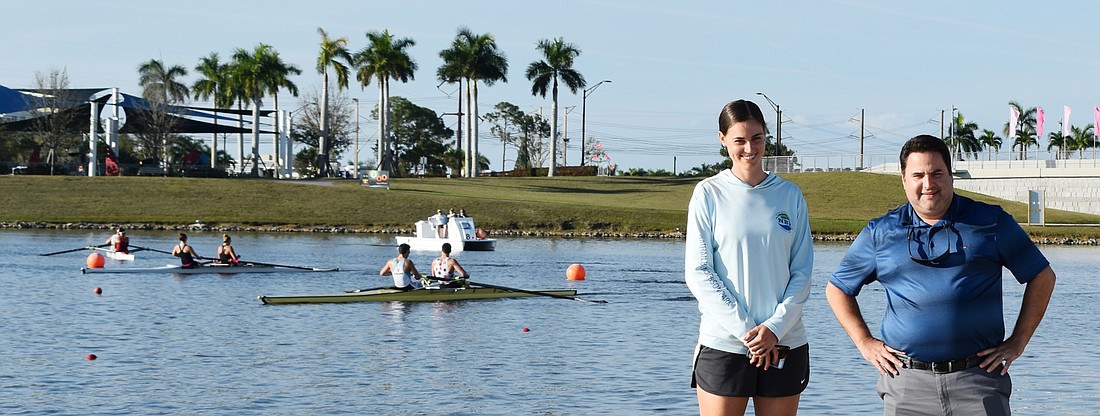- November 15, 2024
-
-
Loading

Loading

When Nathan Benderson Park hosted the USRowing Youth Regional Challenge Training Camp from Nov. 21-24, Stephen Rodriguez could step outside his office at any moment and see a flurry of activity on the lake.
Nearly 400 student athletes and 60 coaches were on-site to train for rowing.
Rodriguez, the president and CEO of Suncoast Aquatic Nature Center Associates, said such camps and team training sessions are laying a foundation for making Nathan Benderson Park one of the best, if not the best, training facilities in the country. And besides being a top sign for rowing, the park also hosts canoe/kayak and dragon boat teams.
“We have seen [team training] grow significantly over the years to give us really consistent numbers,” Rodriguez said. “We have 50 or more training and team activities per year.”
In fiscal year 2019, team training and camps generated $121,228, or 2.7% of the park’s $4.4 million revenue.
During that time, Nathan Benderson Park hosted 94 teams for training, including 21 teams that came two weeks early to train for the World Rowing Under 23 Championships.
Rodriguez said economic impact specifically from team training and camps for fiscal year 2019 was estimated at $3.1 million of the park’s total estimated $34.8 million impact on the region.
Rodriguez said SANCA’s business model for the park has four objectives: to serve as a community amenity, to offer programming, to run events and to provide team training. Team training, he said, has always been a “significant part” of SANCA’s business model and marketing efforts and will become even more important.
Team training sessions went from generating $43,830 in revenues in fiscal year 2015 to the current amount. Rodriquez said team training is profitable because of the pure numbers. Teams pay $5 per person per day to train. If there are 120 people per day for five days, that’s $3,000.
The size of the teams varies. St. Catharines Rowing Club in Ontario recently brought 10 people to the park for five days. Old Dominion University brought 34 rowers for seven days.
The largest visit in the 2019 fiscal year came from Harvard University’s men’s and women’s teams being at the park twice — in January for 10 days with 187 rowers and in March for nine days with 140 rowers.
Florida’s weather certainly is inviting for teams looking to escape cold winter months, but other teams want to train at a site that hosts international events.
“Each coach has a different reason [for choosing a venue],” Rodriguez said. “Really, it takes significant time on our end to market and work with those coaches and attract them to this area. You need to know what it is they are looking for.”
Rodriguez said that in 2021 and 2022, he expects to see an influx of college women’s teams as they prepare to compete in the NCAA Women’s Division I, II, and III Women’s Rowing Championships.
He said the park also is seeing an influx of rowing camps being hosted in partnership with USRowing and is seeing more individuals coming to train at the facility. Rodriguez said the park’s reputation has expanded the normal training season of December to May to November to June. He said those June training sessions are important to the local economy that sees a slowdown at that time of year.
Rodriguez said he expects both economic impacts and team training revenues to increase substantially in the years to come. SANCA awaits construction of a future community center that could offer indoor boat storage for off-site teams, a rental fleet of boats, offices and space for events like weddings.
That amenity likely won’t be built for another three to five years, but Rodriguez said it would have a significant impact once completed. It will offer more amenities that teams can enjoy and will also generate more revenues.
“The success you’re seeing right now would triple or quadruple in size by having that specific amenity,” he said.